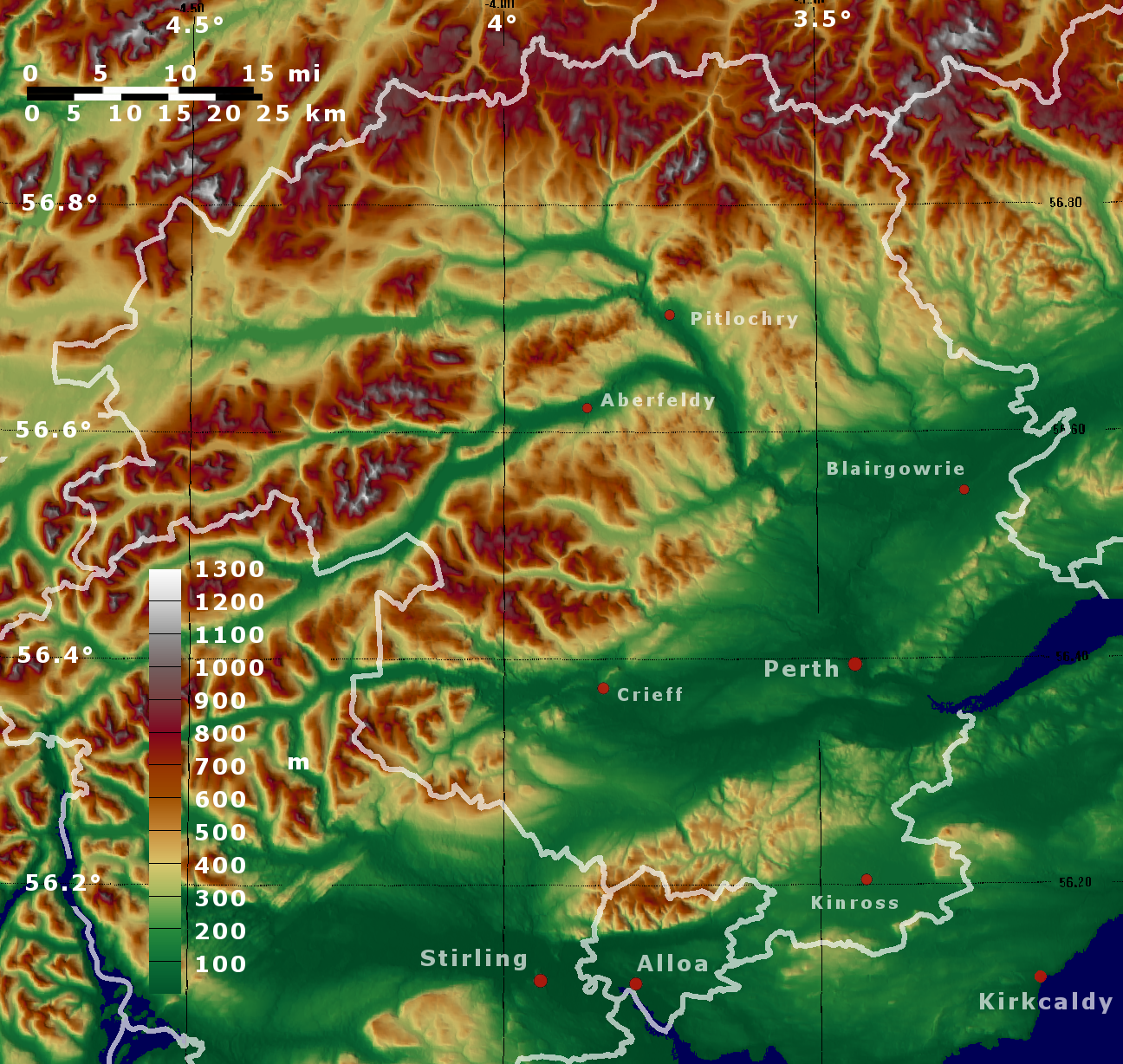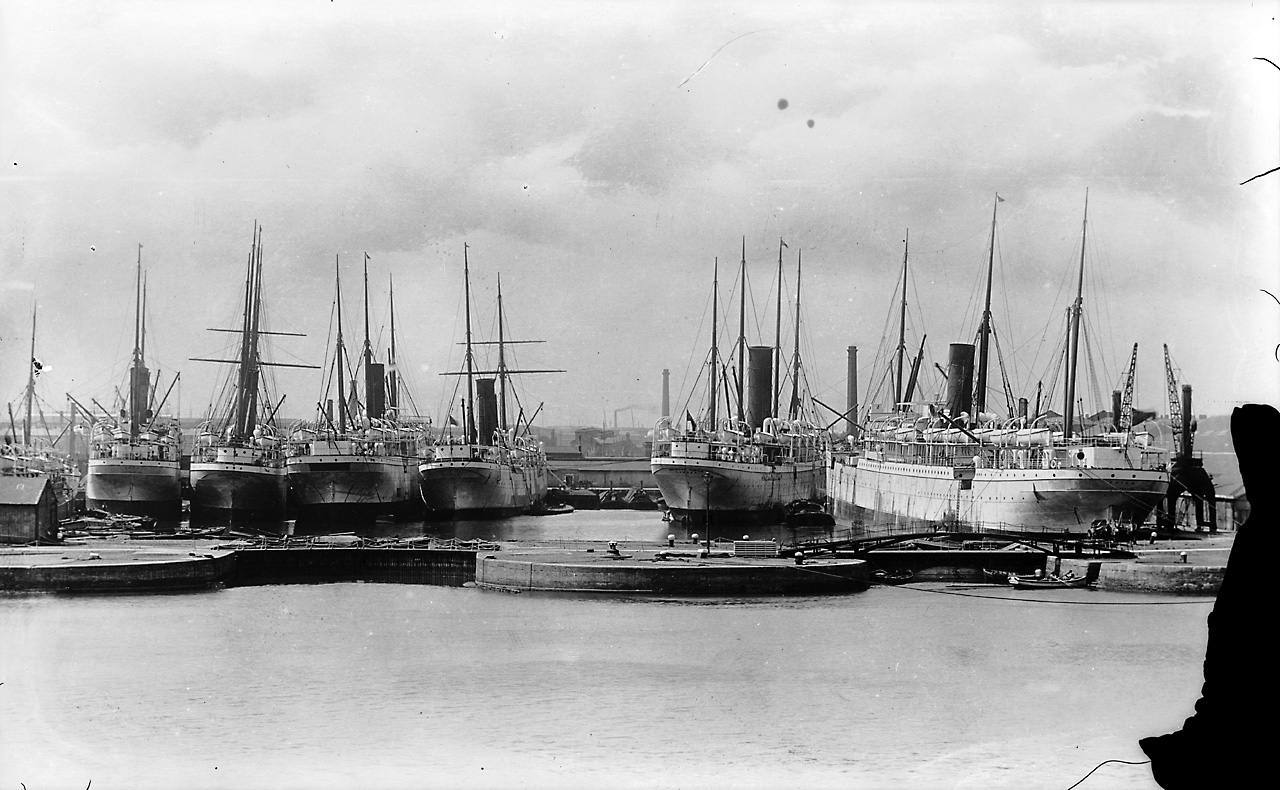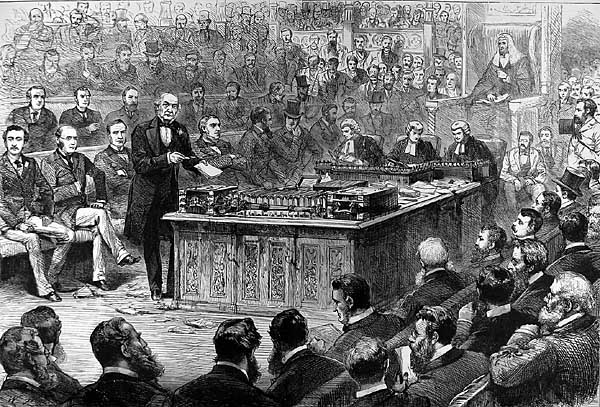|
Fortingall
Fortingall () (lit. "Escarpment Church"—i.e. "church at the foot of an escarpment or steep slope") is a small village in Glen Lyon, Perthshire, Scotland. Its nearest sizable neighbours are Aberfeldy and Kenmore. Local legend claims that it was the birthplace of Pontius Pilate, although he was born well before the Roman conquest and became famous in the biblical account of Jesus's death 30 years before the Romans first reached this part of Scotland. A number of other locations, including villages in Spain and Germany, make similar claims. It is also famous for the Fortingall Yew, the village's churchyard yew tree that could be over 5,000 years old, and thus one of the oldest living things in Europe. Parish church The parish church is on an early Christian site, dedicated to Coeddi, bishop of Iona (d. 712), probably founded about 700 AD from Iona itself as a daughter monastery. Though undocumented, crop-marks of surrounding ditched enclosures have been identified from the ... [...More Info...] [...Related Items...] OR: [Wikipedia] [Google] [Baidu] |
Fortingall Yew
The Fortingall Yew is an ancient European yew (''Taxus baccata'') in the churchyard of the village of Fortingall in Perthshire, Scotland. Considered one of the oldest trees in Britain, modern estimates place its age at an average of 5,000 years. Age Some estimates put the tree's age at between 2,000 and 3,000 years; it may also be a remnant of a post-Roman Christian site and around 1,500 years old.Bevan-Jones (2004) pp. 38–39 Others have suggested an age as great as 5,000 to 9,000 years. Forestry and Land Scotland consider it to be 5,000 years old. This makes it one of the oldest known non-clonal trees in Europe. (The root system of the Norway spruce Old Tjikko in Sweden, which is a clonal tree, is at least 9,500 years old.) The Fortingall Yew is possibly the oldest tree in Britain. The tree The tree's once massive trunk ( in girth when it was first recorded in writing, in 1769) with a former head of unknown original height, is split into several separate stems, giving th ... [...More Info...] [...Related Items...] OR: [Wikipedia] [Google] [Baidu] |
Glen Lyon
Glen Lyon () is a glen in the Perth and Kinross region of Scotland. It is the longest enclosed glen in Scotland and runs for from Loch Lyon in the west to the village of Fortingall in the east. This glen was also known as ''An Crom Ghleann'' ("The Bent Glen"). The land given over to the MacGregors was ''An Tòiseachd''. It forms part of the Loch Rannoch and Glen Lyon National Scenic Area, one of forty such areas in Scotland, which are defined so as to identify areas of exceptional scenery and to ensure its protection from inappropriate development by restricting certain forms of development. Sir Walter Scott described Glen Lyon as the "longest, loneliest and loveliest glen in Scotland". Apart from a few scattered farms and cottages throughout the glen, the only real settlements are at Fortingall and Bridge of Balgie. The glen contains several small hamlets and has a primary school where Gaelic is taught weekly. History Quite densely inhabited from prehistoric times (as man ... [...More Info...] [...Related Items...] OR: [Wikipedia] [Google] [Baidu] |
Pontius Pilate
Pontius Pilate (; ) was the Roman administration of Judaea (AD 6–135), fifth governor of the Judaea (Roman province), Roman province of Judaea, serving under Emperor Tiberius from 26/27 to 36/37 AD. He is best known for being the official who presided over Pilate's court, the trial of Jesus and ultimately ordered crucifixion of Jesus, his crucifixion. Pilate's importance in Christianity is underscored by his prominent place in both the Apostles' Creed, Apostles' and Nicene Creeds. Because the gospels portray Pilate as reluctant to execute Jesus, the Ethiopian Orthodox Tewahedo Church believes that Pilate became a Christian and venerates him as both a martyr and a saint, a belief which is historically shared by the Coptic Orthodox Church, Coptic Church, with a Calendar of saints, feast day on 19 or 25 June, respectively. Pontius Pilate is the best-attested figure to hold the position of Roman governor, though few sources about his rule have survived. Virtually nothing is known ... [...More Info...] [...Related Items...] OR: [Wikipedia] [Google] [Baidu] |
James MacLaren (architect)
James Marjoribanks MacLaren (12 January 1853 – 20 October 1890) was a Scottish architect associated with the Arts and Crafts movement and the development of Scottish Vernacular architecture. He was a major influence on Charles Rennie Mackintosh, and designed buildings in London, the Canary Islands, Stirling and Fortingall in Perthshire. Early life and education MacLaren was the sixth of 11 children of John MacLaren, a farmer at Middleton of Boquhapple, Thornhill, Callander, and his first wife Janet Downie. MacLaren was educated at the village school and at Stirling High School.James Marjoribanks MacLaren - |
Perthshire
Perthshire (Scottish English, locally: ; ), officially the County of Perth, is a Shires of Scotland, historic county and registration county in central Scotland. Geographically it extends from Strathmore, Angus and Perth & Kinross, Strathmore in the east, to the Pass of Drumochter in the north, Rannoch Moor and Ben Lui in the west, and Aberfoyle, Scotland, Aberfoyle in the south; it borders the counties of Inverness-shire and Aberdeenshire to the north, Angus, Scotland, Angus to the east, Fife, Kinross-shire, Clackmannanshire, Stirlingshire and Dunbartonshire to the south and Argyllshire to the west. Perthshire is known as the "big county", or "the Shire", due to its roundness and status as the fourth List of Scottish counties by area, largest historic county in Scotland. It has a wide variety of landscapes, from the rich agricultural straths in the east, to the high mountains of the southern Scottish Highlands, Highlands. History Administrative history Perthshire's origins a ... [...More Info...] [...Related Items...] OR: [Wikipedia] [Google] [Baidu] |
Aberfeldy, Scotland
Aberfeldy () is a burgh in Perth and Kinross, Scotland, on the River Tay. A small market town, Aberfeldy is located in Highland Perthshire. It was mentioned by Robert Burns in the poem ''The Birks of Aberfeldy'' and in the Ed Sheeran song "The Hills of Aberfeldy". Etymology Aberfeldy means 'mouth of the Peallaidh'. The first element of the name is the Pictish word ''aber'' 'river mouth'. The river-name perhaps incorporates the name of a water-sprite known as Peallaidh, which in Gaelic means 'shaggy'. Aberfeldy is recorded in 1526 as ''Abrefrally'' and in 1552 as ''Abirfeldy''. History Early history Beyond its association with Burns, who mentioned Aberfeldy in his poem '' The Birks of Aberfeldy'', the town is known for Wade's Bridge, built in 1733 and designed by architect William Adam, father of Robert Adam. General George Wade considered this bridge to be his greatest accomplishment. Aberfeldy is also mentioned in the traditional "Loch Tay Boat Song". While working in the ... [...More Info...] [...Related Items...] OR: [Wikipedia] [Google] [Baidu] |
Perth And Kinross
Perth and Kinross (; ) is one of the 32 council areas of Scotland, and a Lieutenancy areas of Scotland, lieutenancy area. It is bordered by Highland (council area), Highland and Aberdeenshire to the north, Angus, Scotland, Angus, Dundee, and Fife to the east, Clackmannanshire to the south, and Stirling (council area), Stirling and Argyll and Bute to the west. Geographically the area is split by the Highland Boundary Fault into a more mountainous northern part and a flatter southern part. The northern area is a popular tourist spot, while agriculture makes an important contribution to the southern part of the area. The area is run by Perth and Kinross Council, which is based in Perth, Scotland, Perth. History The area takes its name from the two historical Shires of Scotland, shires of Perthshire and Kinross-shire. Each was administered by a Sheriff principal, sheriff from medieval times, supplemented by Commissioners of Supply, commissioners of supply from 1667 and then by a ... [...More Info...] [...Related Items...] OR: [Wikipedia] [Google] [Baidu] |
Donald Currie
Sir Donald Currie (17 September 182513 April 1909) was a Scottish shipowner, politician and philanthropist. Early life and career He was born at Greenock, Renfrewshire, on 17 September 1825, the third son of ten children of James Currie (1797–1851) and Elizabeth (1798–1839), daughter of Donald Martin, all of Greenock. His parents moved to Belfast in 1826, and Currie was sent at seven to the Belfast Academy, and subsequently to the Royal Belfast Academical Institution; at both schools he distinguished himself. As a boy he interested himself in the sea and shipping, and at fourteen entered the shipping office of a relative in Greenock. After four years there, he joined in 1844 the Cunard Steamship Company, Liverpool, owners of the only regular line of steamers sailing between Europe and America, which numbered no more than three the ''Caledonia'', the ''Arcadia'', and the ''Britannia'', all of small tonnage. Currie became head of the company's cargo department. In 1849 ... [...More Info...] [...Related Items...] OR: [Wikipedia] [Google] [Baidu] |
Scotland
Scotland is a Countries of the United Kingdom, country that is part of the United Kingdom. It contains nearly one-third of the United Kingdom's land area, consisting of the northern part of the island of Great Britain and more than 790 adjacent Islands of Scotland, islands, principally in the archipelagos of the Hebrides and the Northern Isles. To the south-east, Scotland has its Anglo-Scottish border, only land border, which is long and shared with England; the country is surrounded by the Atlantic Ocean to the north and west, the North Sea to the north-east and east, and the Irish Sea to the south. The population in 2022 was 5,439,842. Edinburgh is the capital and Glasgow is the most populous of the cities of Scotland. The Kingdom of Scotland emerged as an independent sovereign state in the 9th century. In 1603, James VI succeeded to the thrones of Kingdom of England, England and Kingdom of Ireland, Ireland, forming a personal union of the Union of the Crowns, three kingdo ... [...More Info...] [...Related Items...] OR: [Wikipedia] [Google] [Baidu] |
Liberal Unionist Party
The Liberal Unionist Party was a British political party that was formed in 1886 by a faction that broke away from the Liberal Party. Led by Lord Hartington (later the Duke of Devonshire) and Joseph Chamberlain, the party established a political alliance with the Conservative Party in opposition to Irish Home Rule. The two parties formed the ten-year-long coalition Unionist Government 1895–1905 but kept separate political funds and their own party organisations until a complete merger between the Liberal Unionist and the Conservative parties was agreed to in May 1912.Ian Cawood, ''The Liberal Unionist Party: A History'' (2012) History Formation The Liberal Unionists owe their origins to the conversion of William Ewart Gladstone to the cause of Irish Home Rule (i.e. limited self-government for Ireland). The 1885 general election had left Charles Stewart Parnell's Irish Nationalists holding the balance of power, and had convinced Gladstone that the Irish wanted and d ... [...More Info...] [...Related Items...] OR: [Wikipedia] [Google] [Baidu] |
Archaeology
Archaeology or archeology is the study of human activity through the recovery and analysis of material culture. The archaeological record consists of Artifact (archaeology), artifacts, architecture, biofact (archaeology), biofacts or ecofacts, archaeological site, sites, and cultural landscapes. Archaeology can be considered both a social science and a branch of the humanities. It is usually considered an independent academic discipline, but may also be classified as part of anthropology (in North America – the four-field approach), history or geography. The discipline involves Survey (archaeology), surveying, Archaeological excavation, excavation, and eventually Post excavation, analysis of data collected, to learn more about the past. In broad scope, archaeology relies on cross-disciplinary research. Archaeologists study human prehistory and history, from the development of the first stone tools at Lomekwi in East Africa 3.3 million years ago up until recent decades. A ... [...More Info...] [...Related Items...] OR: [Wikipedia] [Google] [Baidu] |







